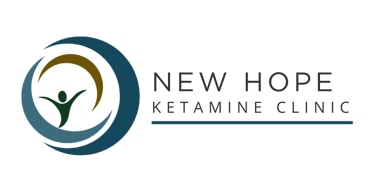Address: 21660 W Field Pkwy, Suite 301, Deer Park, IL 60010

Understanding Treatment-Resistant Depression Among Adults and Middle-Aged Populations in Chicago
Depression is a pervasive mental health issue affecting millions worldwide. In urban centers like Chicago, the challenges are compounded by socioeconomic disparities, access to healthcare, and cultural stigmas. Among the various forms of depression, Treatment-Resistant Depression (TRD) poses significant hurdles for both patients and healthcare providers.
Admin
5/12/2025
Depression is a pervasive mental health issue affecting millions worldwide. In urban centers like Chicago, the challenges are compounded by socioeconomic disparities, access to healthcare, and cultural stigmas. Among the various forms of depression, Treatment-Resistant Depression (TRD) poses significant hurdles for both patients and healthcare providers. This blog delves into the prevalence of TRD among adults and middle-aged populations in Chicago, explores reliable self-assessment tools for depression, and offers guidance on their usage and interpretation.
Introduction
Prevalence of Depression in Chicago
While specific data on Chicago's depression rates are limited, national statistics provide a framework for understanding the local landscape. According to the Centers for Disease Control and Prevention (CDC), during August 2021–August 2023, the prevalence of depression in the past two weeks was 13.1% among individuals aged 12 and older in the United States (CDC Data Brief). This figure underscores the widespread nature of depression, which likely mirrors trends in urban areas like Chicago.
Understanding Treatment-Resistant Depression (TRD)
Definition and Criteria
Treatment-Resistant Depression is typically defined as a major depressive disorder that does not respond to at least two different antidepressant treatments of adequate dose and duration. This condition poses significant challenges, leading to prolonged suffering, decreased quality of life, and increased risk of suicide.
Prevalence
Estimating the exact prevalence of TRD is complex due to varying definitions and diagnostic criteria. However, studies suggest that approximately 10-30% of individuals with major depressive disorder may experience TRD. In urban settings like Chicago, factors such as socioeconomic disparities, limited access to specialized care, and cultural stigmas may contribute to higher rates of TRD.
Self-Assessment Tools for Depression and Anxiety
Self-assessment tools are valuable for individuals to gauge their mental health status and seek timely intervention. Below are some widely recognized tools:
1. Patient Health Questionnaire-9 (PHQ-9)
Description: A 9-item self-administered tool used to screen, diagnose, monitor, and measure the severity of depression.
How to Use: Each item is scored from 0 (not at all) to 3 (nearly every day), based on experiences over the past two weeks. Total score ranges from 0 to 27.
Interpretation:
0–4: Minimal depression
5–9: Mild depression
10–14: Moderate depression
15–19: Moderately severe depression
20–27: Severe depression
2. Center for Epidemiologic Studies Depression Scale (CES-D)
Description: A 20-item questionnaire designed to measure depressive symptoms in the general population.
How to Use: Respondents rate how often they experienced specific symptoms during the past week on a scale from 0 (rarely or none of the time) to 3 (most or all of the time).
Interpretation: Scores range from 0 to 60. A score of 16 or higher suggests the presence of depressive symptoms warranting further evaluation.
3. Generalized Anxiety Disorder 7-item (GAD-7) Scale
Description: A 7-item tool used to screen for and measure the severity of generalized anxiety disorder.
How to Use: Each of the 7 items is scored from 0 (not at all) to 3 (nearly every day), reflecting experiences over the past two weeks.
Interpretation:
0–4: Minimal anxiety
5–9: Mild anxiety
10–14: Moderate anxiety
15–21: Severe anxiety
4. Beck Depression Inventory (BDI)
Description: A 21-question multiple-choice self-report inventory for measuring the severity of depression.
How to Use: Each item is scored on a scale of 0 to 3, with total scores ranging from 0 to 63.
Interpretation:
0–13: Minimal depression
14–19: Mild depression
20–28: Moderate depression
29–63: Severe depression
Link: BDI Questionnaire (PDF)
Utilizing Self-Assessment Tools Effectively
While self-assessment tools are valuable for initial screening, they are not substitutes for professional diagnosis. Individuals experiencing persistent symptoms should consult healthcare providers for comprehensive evaluation and treatment planning.
Mental Health Organizations in Chicago
Here are some organizations providing mental health support, awareness, and resources:
1. NAMI Chicago
Overview: Provides education, support, and advocacy for individuals affected by mental illness.
Website: namichicago.org
2. Mental Health America (MHA)
Overview: Offers resources and support for mental health conditions, including screening tools and information.
Website: mhanational.org/resources
3. JCFS Chicago
Overview: Provides mental health services, including counseling and support groups, to individuals and families.
Website: jcfs.org/find-help/mental-health
4. Coffee, Hip-Hop & Mental Health
Overview: A nonprofit organization aiming to normalize therapy and mental health conversations in the Black community.
Learn More: Verywell Mind Article
Conclusion:
Treatment-Resistant Depression is a complex and challenging condition, particularly in diverse urban environments like Chicago. By understanding its prevalence, utilizing reliable self-assessment tools, and implementing targeted strategies, individuals and healthcare providers can work collaboratively to improve outcomes and enhance quality of life.
Addressing TRD in Chicago
Challenges
Access to Care: Limited availability of mental health professionals and services in certain neighborhoods.
Socioeconomic Factors: Financial constraints can hinder access to consistent and quality treatment.
Stigma: Cultural and societal stigmas may prevent individuals from seeking help.
Strategies for Improvement
Community Outreach: Implementing community-based programs to raise awareness and provide resources.
Integrated Care Models: Combining mental health services with primary care to facilitate holistic treatment.
Telehealth Services: Expanding telepsychiatry to reach underserved populations.


Health Care Professionals' Resources
Sign Up To Receive The Latest Updates On Ketamine Infusion Therapy And Spravato Nasal Spray For Mental Health




Contact Us
21660 W Field Pkwy
Suite 301
Deer Park, IL 60010
Phone:
847-232-4045
Fax:
847-232-4042
Email:
info@newhopeinfusion.com
Treatments
Disclaimer
© 2024. All rights reserved.
Pages
Hours of Operation
Monday 9:00am- 5:00pm
Wednesday 9:00am- 5:00pm
If you or someone you care about is currently facing a crisis, we strongly urge you to contact the National Suicide Prevention Lifeline at 800-273-8255 or call 911 for immediate assistance.
